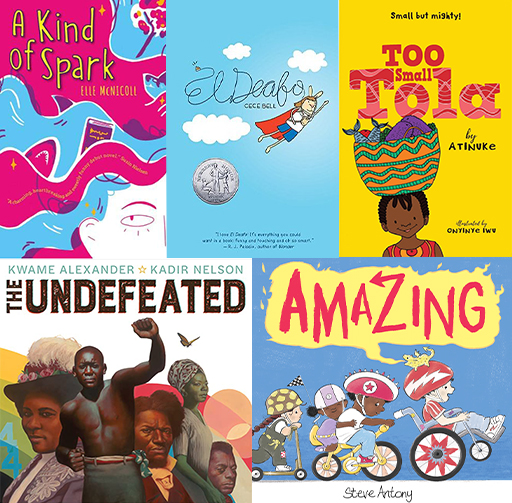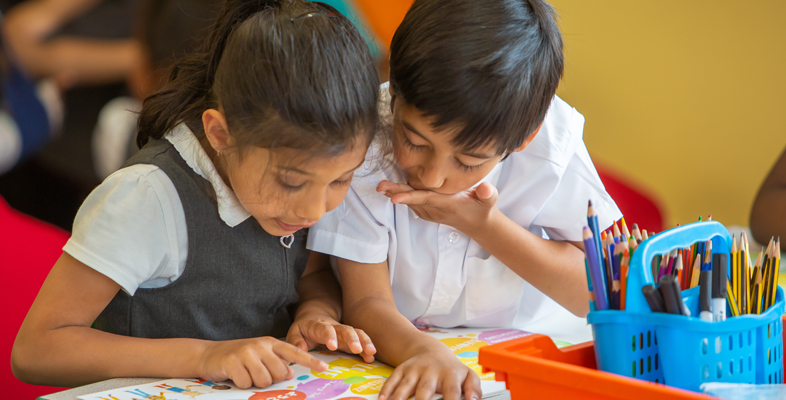3 Broadening your knowledge of texts that reflect children’s realities
In Session 1, you read about Rudine Sim Bishop’s (1990) metaphor of mirrors, windows and sliding glass doors, which illustrates how children see themselves and their own lives represented in texts, and how they can get to know unfamiliar worlds and different perspectives through reading. You also explored the ways in which texts can sustain or counter social and cultural stereotypes. Because interaction with text can be so powerful for a child’s developing sense of self and understanding of the world around them, there is growing recognition that texts should represent all children and families. Therefore, it is important that educators develop their knowledge of children’s texts that positively reflect diversity. Such texts, however, are not always readily available on bookshelves, in libraries, book shops, or on-screen.
Since 2017, the Centre for Literacy in Primary Education (CLPE), a UK based organisation, has conducted an annual ‘Reflecting Realities’ survey of children’s picture books, fiction and non-fiction published in the UK for children aged 3–11 years. This study specifically examines representation of children of Black, Asian and minority ethnic heritage. The survey shows that children from these ethnic backgrounds continue to be significantly under-represented in children’s literature (CLPE, 2020). Only 7% of children’s books published in 2019 had a non-White character, in comparison to the UK primary school population where 33.5% of children are from a Black, Asian or minority ethnic background.

The Reflecting Realities survey also considered how characters of Black, Asian and minority ethnic heritage were positioned in books, for example, whether they were the protagonist, a secondary character or a ‘side-kick’ (CLPE, 2020). In addition, the research looked at the ways in which racism, celebrations of multiculturalism and civil rights issues were represented. The findings highlighted that even where texts appear to have ethnically diverse characters, these characters may not be fully developed. For example, some only show a diverse character on the cover, some illustrations or character descriptions appear to erase the detail of ethnicity and in some cases even choices of character names may be convenient, rather than representative.
Furthermore, multilingual children may encounter few or no texts in their home language whilst at school, which may impact on their confidence and motivation to read for pleasure. Smaller-scale research shows that for social reasons and issues of access, children who have been previously educated in another country and language might choose texts in English and by English authors rather than those in their home language or set in their country of origin (Little, 2021). Including multilingual texts in classrooms can help all children value linguistic diversity and support the positive identities of multilingual learners.
As discussed in Session 3, it is not only children of ethnic minority heritage and multilingual children who are under-represented in children’s texts. In a recent UK survey of almost 60,000 young people (9–18-year-olds), 40% wanted to access texts that reflected their own lives (Best et al., 2020). This was particularly important to young people from less affluent backgrounds and children and young people who reported being gender non-conforming. Other realities that need to be authentically and sensitively reflected in children’s texts include adoption, divorce, poverty, bereavement, disability, mental health concerns, and LGBTQ parents. You may be able to add more to this list. When educators develop breadth and depth in their knowledge of children’s texts, they are better positioned to recommend and share texts that promote equality.
SAQ _unit5.3.1 Personal reflection 1
Browse your book collection at home, or if you have the opportunity, browse your classroom bookshelf or school library too. Think about the statements below and reflect on where you would place yourself on the scale.
- I know a broad range of children’s texts which reflect social and cultural diversity.
- The bookshelf or library in my classroom/school includes texts that reflect the children’s realities.
Comment
Even if you have a great selection of children’s texts available, it is important to keep updating your knowledge and collection with diversity and inclusion in mind. In the Further resources section at the end of this session, you will find a list of websites and resources that might be helpful in developing your knowledge of diverse children’s texts.

Box _unit5.3.1 Optional resource
You can read the most recent Reflecting Realities report here. [Tip: hold Ctrl and click a link to open it in a new tab. (Hide tip)]

